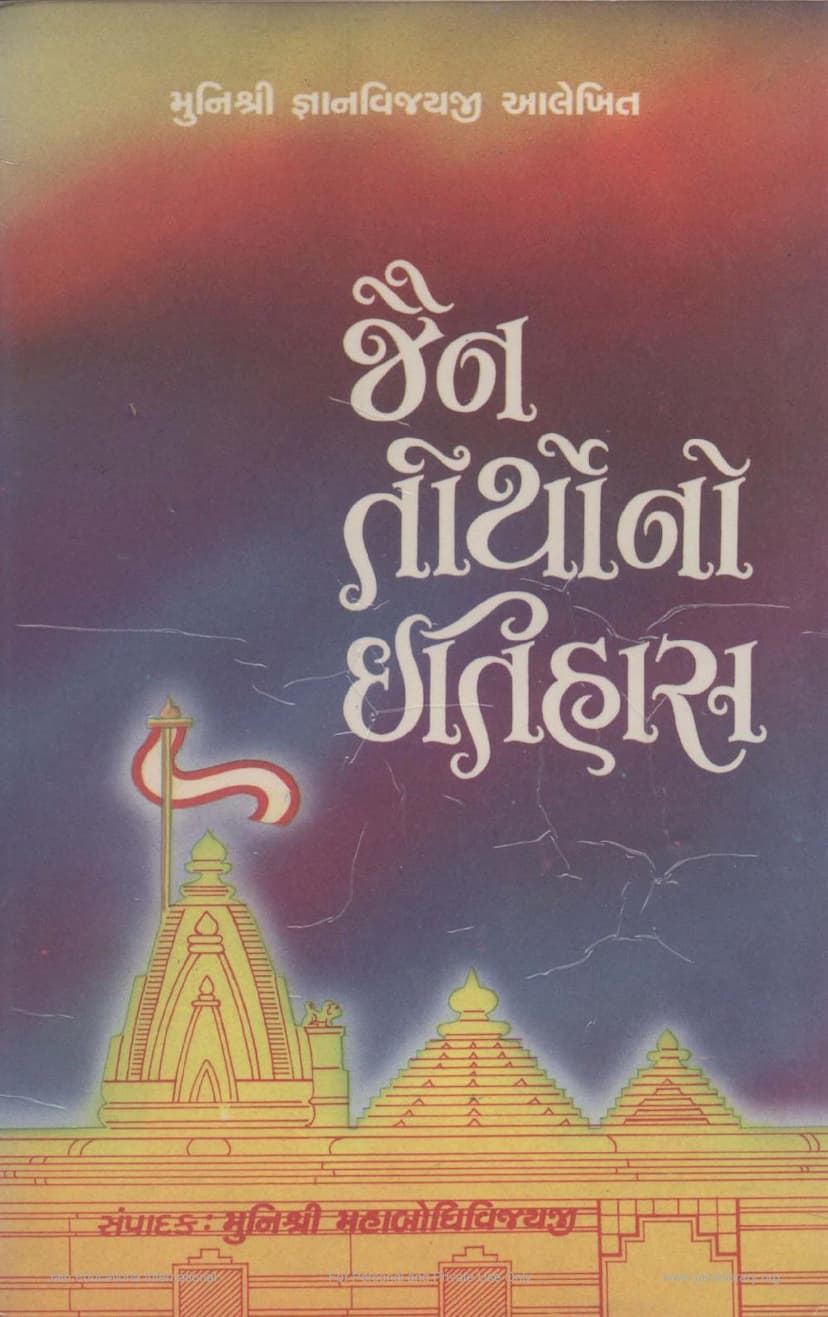Jain Tirthono Itihas
Added to library: September 2, 2025

Summary
Here's a comprehensive summary of the Jain text "Jain Tirthono Itihas" by Mahabodhivijay, based on the provided pages:
Book Title: Jain Tirthono Itihas (History of Jain Pilgrimage Sites) Author: Muni Jnanvijayji Editor: Muni Mahabodhivijayji Publisher: Shri Jinshasan Aradhana Trust
Overall Purpose and Significance:
This book is a compilation and re-publication of historical information about various Jain pilgrimage sites (Tirths). The aim is to provide devotees with a deeper understanding of the history, significance, and architectural details of these sacred places. The editor emphasizes that knowledge of a Tirth's history fosters greater devotion and respect towards it and the Tirthankar deities. The book aims to revive interest in these historical accounts, which have become rare and inaccessible over time.
Key Themes and Content:
-
The Importance of Tirths: The book defines Tirths as places that help one cross the ocean of existence. It differentiates between mobile Tirths (like the four-fold Jain congregation) and stationary Tirths (places where Tirthankar deities attained liberation or where significant idols are located). Visiting Tirths is considered spiritually beneficial, leading to the shedding of karmas and the acquisition of virtues.
-
The Need for Historical Knowledge: The editor laments that while the number of Tirths and pilgrimages has increased, devotional fervor towards the Tirths and Tirthankars has not grown proportionally. A primary reason identified is the lack of historical knowledge about these sites. Understanding the history – who founded the Tirth, why, when, with whose inspiration, the expenses involved, and how Tirths were protected during challenging times (like the Mughal era) – is crucial for developing genuine love and reverence.
-
The Original Work and Re-publication: The book is based on a work originally written by Muni Jnanvijayji about 70 years prior to this re-publication. This older book contained the history of 37 prominent and lesser-known Tirths of that era. The current edition is a re-publication by Shri Jinshasan Aradhana Trust because the original was becoming rare and difficult to obtain. Muni Mahabodhivijayji has re-edited and re-composed the text for this new edition.
-
Historical Details of Specific Tirths: The bulk of the book is dedicated to providing historical accounts of numerous Jain Tirths. Each Tirth's description typically includes:
- Location and Geography: Details about its geographical setting, proximity to other towns, and sometimes its altitude.
- Historical Origin and Founding: Information about who established the Tirth, when, and the circumstances surrounding its creation.
- Architectural Details: Descriptions of temples, idols, pillars, domes, and specific features.
- Renovations and Reconstructions (Jirnoddhar): Accounts of various repairs, expansions, and rebuildings of temples over centuries, often mentioning the patrons and the specific dates or eras.
- Legends and Miracles: Stories associated with the Tirths, including divine interventions, miracles, and the lives of influential individuals (kings, ministers, wealthy patrons, saints).
- Inscriptions and Artifacts: References to stone inscriptions (shilalekhs), copper plates, and other ancient artifacts that provide historical evidence.
- Key Personalities: Mention of Tirthankar lords, Ganadhars, influential Acharyas, rulers, ministers, and wealthy devotees who played a significant role in the history of the Tirths.
- Current Status: Brief mentions of the Tirth's present condition or notable aspects.
-
Notable Tirths Covered (as per the index): The book covers a wide range of significant Jain Tirths, including:
- Shatrunjaya (Palitana)
- Girnar
- Sametshikhar
- Ashtapad
- Pavapuri
- Champapuri
- Kesariya
- Arasan (Kumbhariya)
- Shankheshwar Parshvanath
- TarangaJi
- Zolika Vihar
- Bhoyani
- Pansar
- Serisa
- Vamaj
- Bhiladiya
- Khambhat
- Ashvavbodh
- Shakunika Vihar
- Kavi
- Gandhar
- Bhadreshwar
- Suthri
- Ajara Parshvanath
- Antarikshji
- Kumbhapak
- Avantipur Parshvanath
- Falodhi
- Nadulai
- Ranakpur
- Karhada
- Kapra Parshvanath
- Bhopavar
- Marwad's Jirapalli
- Navkhanda Parshvanath-Ghogha
- Siddhapur
-
Practices and Etiquette at Tirths: The book concludes with important suggestions for pilgrims, emphasizing respectful behavior at sacred sites. These include:
- Treating Tirths as places of worship, not mere resting stops.
- Abstaining from gambling.
- Avoiding night meals.
- Not consuming forbidden foods, roots, ice cream, or cold drinks.
- Renouncing smoking and other addictions.
- Observing celibacy.
- Not watching TV or movies, or listening to film music.
- Performing worship.
- Avoiding "Ashatana" (disrespect or offense) towards the Tirth, which incurs significant negative karma.
-
Historical Context and Evolution: The text touches upon the historical periods of Jainism, including references to ancient kings, emperors like Samprati and Kumarpal, the Mughal era, and the impact of different dynasties and rulers on the maintenance and sanctity of these Tirths. It also mentions the existence of different Jain sects (like Khartargachh) and their contributions.
-
Dedication and Support: The publication acknowledges financial and spiritual support from various individuals, families, and Jain trusts and organizations, highlighting the collective effort involved in preserving and disseminating this historical knowledge.
In essence, "Jain Tirthono Itihas" is presented as a vital resource for Jain devotees, aiming to connect them with their rich heritage by providing historical, architectural, and devotional insights into their sacred pilgrimage sites. It serves as a guide for deeper engagement with these places, fostering greater faith and understanding.